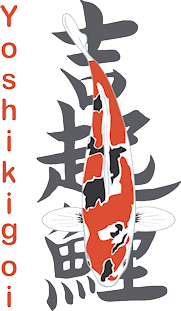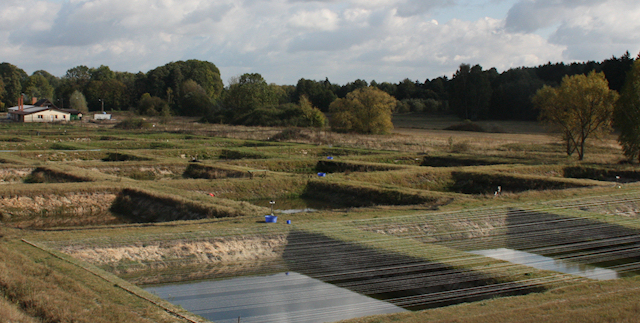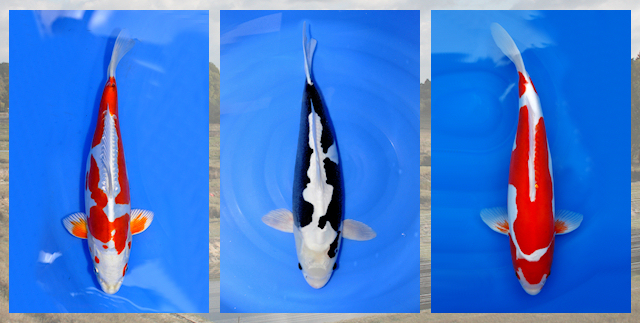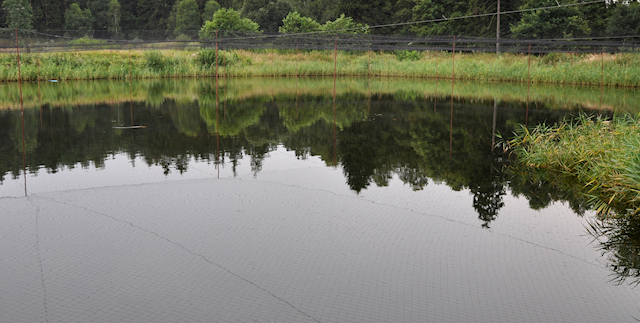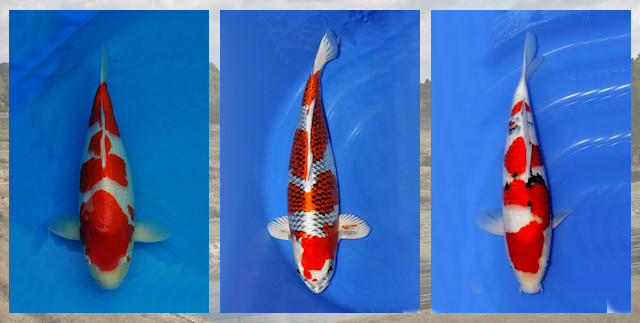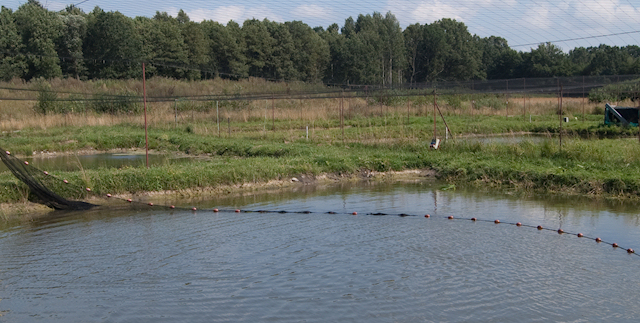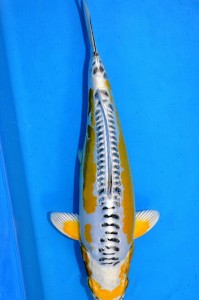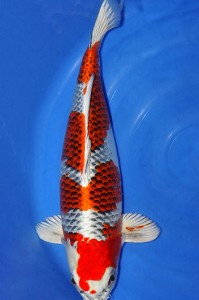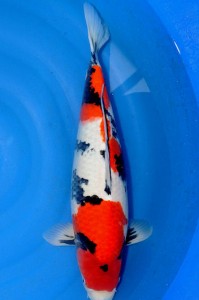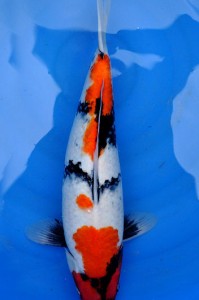 Recently Engel Kromhout van der Meer conducted an interview (via E-mail) with Yoshikigoi’s Jos Aben. The first snippet of this interview can be read on this page.
Recently Engel Kromhout van der Meer conducted an interview (via E-mail) with Yoshikigoi’s Jos Aben. The first snippet of this interview can be read on this page.
We will be translating the rest of the interview shortly. However we thought it would be nice to tease you a little bit…
KoiQuestion Engel:
Hello Jos, nice of you to participate in this e-mail interview. We already met on the farm in Poland in august this year. During that you mentioned the necessary upcoming expansions of the farm, such as building a state-of-the-art koihouse to be able to keep more of the harvested koi indoor. Whilst we were e-mailing building koihouse had started. Would you be so kind to tell how things are progressing?
Yoshikigoi Jos:
Time flies and so does the progress of our new building. The first section, the part we wanted to finish this year, has indeed been finished as planned. However this is only a quarter of the entire planned new facility. After the complete realization of this project the koi house will be 100 x 20 meters. The 2013 section is 40 x 10 meters.
KoiQuestion Engel:
How many ponds will this koihouse contain and how much water will there be in those ponds? Could you make an estimate of the number of koi that will be kept in this building?
Yoshikigoi Jos:
This part of the facility will contain 8 individually filtered ponds of approximately 50.000 liters each. This means a new indoor facilty of 400.000 liters. The number koi swimming in them will be depending on the sizes of the koi we will be placing in the ponds. The first 4 ponds are currently inhabited by 5000 tosai. The other four were “filled” with around 350 nisai per pond. Do not forget that we already had another koihouse containing 550.000 liters of water so this expansions almost doubles our capacity.
KoiQuestion Engel:
Are your ponds heated? And if so, how is this done?
Yoshikigoi Jos:
The new Koi house is definitely heated , however we do not raise the temperature any higher than 10-13 degrees Celsius. The temperature inside the old Koi house is significantly higher. Our Tategoi Tosai are kept in the old facility and we want them to establish the best maximum growth and development. The old koihouse contains about 5,000 Tosai. We keep them between 22 and 24 degrees Celsius. After one winter our Tosai will be approximately 10 months old and between 25 to 40 centimeters. We use very large coal fired heaters to raise the water temperatures.
KoiQuestion Engel:
What kind of filtration is used in the new koihouse? IS this any different from filtration in the old koihouse? And what our readers would like to know… Why do you use this filtration method?
Yoshikigoi Jos:
I only use Japanese mats as filtration means. Over the years I have tested almost every filtration media you can think of and I still believe Japanese mats are the best means to use. As long as it is possible to keep the Japanese mats clean and prevent them from clogging up there is no better filtration medium. Like I said I have tested many filters and their media like for instance Mattala mats, Red- X mats, Kaldness, bead filters and how who knows what other means you can think of, but none of them were as effective as the good old Japanese mat. We have a rather heavy feeding schedule and the other filtration means kept giving us unpleasant surprises. Our filters are quite large (about 30 % of the pond contents). Each pond has it own separate filter. And in addition to that we exchange at least 80% of water twice a week.
Inside the new Koi house, where the fish are kept cooler, we have fresh water constantly running at approximately 12-15 degrees. These ponds are there for constantly being refreshed. We have a floor heating system installed through which we can adjust the temperature separately per pond. So we are able to set the desired temperature individually for each and every pond. We have installed two drum filters as a test and we are negotiating to start tests with a band-pass filter as a pre filter. After an extensive period of testing we will determine which pre filtration is the best way to go and after that we will install these filters on all indoor ponds. The current drum filters are 60 microns and the band-pass filter goes as far as 6 microns for filtration.
Our conclusions will not only be determined by the amount of “dirt” coming through the filters but also how the koi will keep developing, think about lustre, skin quality, color retention and growth. That is also one of the reasons why we are only testing with two ponds. So we will be able to compare the development side by side.
KoiQuestion Engel:
You have already shown on the internet that you are capable of growing very nice varieties. Every koi lover has seen the beautiful Beni Kikokuryu and lovely Asagi you have bred. Which Koi meets you no doubted extraordinary expectations?
Yoshikigoi Jos:
We are still trying to expand just to be able to offer the widest possible range of varieties to our customers as possible. Some varieties are already well known throughout the entire koi scene. Some of these varieties are; Yuki Asagi, Beni Kikokuryu, Beni Kumonryu, Hariwake and Doitsu Doitsu Ochiba. These are for sure the varieties Yoshikigoi is well known for. The last couple of years we have been focusing on amongst others our Showa breeding and I must say developments are very positive. I also like to surprise the koi scene with all new varieties. A good example of these unique koi is the fact that we have won three consecutive Most Unique Koi Award during the annual Holland Koi Show Arcen.
KoiQuestion Engel:
Where and when will we be able to visit our local Koi dealer to purchase a real Yoshikigoi?
Yoshikigoi Jos:
We are already working on a chain of dealers in the Netherlands, Germany, Belgium, France and even the UK. We will be placing a list on our website in the spring of 2014. There are already several dealers selling Yoshikigoi though.
KoiQuestion Engel:
During our last visit with you at the farm you mentioned the fact that more ponds will be dug at the farm. How specific are these plans?
Yoshikigoi Jos:
Our work never ceases… We have just started digging these ponds. The plan is to dig at least four more ponds during this winter. The capacity of these ponds will be 9,000 cubic meters (9,000,000 liters of water!) Per pond that is! After those we still have licenses to dig ten even bigger ones.The licenses for those other ponds are for about 14,000 cubic meters per pond. We also have placed an application for one hundred additional Tosai ponds containing 1.5 million liters each. We want to keep expanding for a lot more years. As you know we now have fifty 1.5 million liter ponds for Tosai fry. In addition to those we have about 7 larger ponds between 0.5 hectares and 1.5 hectares. Our biggest ponds at the moment are four ponds of 1.5 to 3.5 hectares per pond. Just to give you an idea as to how big one acre of water really is… imagine this… A pond of one hectare which is 2 meters in water depth will hold approximately 20 million liters of water .
KoiQuestion Engel:
During our previous visit you promised our readers a Koi as a prize in the KoiQuestion December quiz We thought this was a very nice gesture. Meanwhile it has come to our attention that Yoshikigoi will be donating a Ginrin Chagoi. How will the winner of this gorgeous koi be able to get it inside his (or hers) pond? We are assuming (and hoping) the Ginrin Chagoi will be allowed to stay at Yoshikigoi Farm in an heated environment during the upcoming winter? So the lucky winner will have wait until spring 2014?
Yoshikigoi Jos:
Hmmm what to do… The koi will stay at Yoshikigoi Farm of course, there is no doubt in my mind. The easiest way will probably be to ship the Koi to our location in the Netherlands in the spring of 2014. As soon as the pond temperatures are warm enough we will relocate this lovely shiny lady to Grubbenvorst where the lucky winner will be allowed to meet her!
Part two in English will follow shortly
